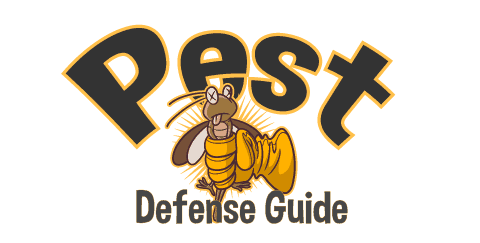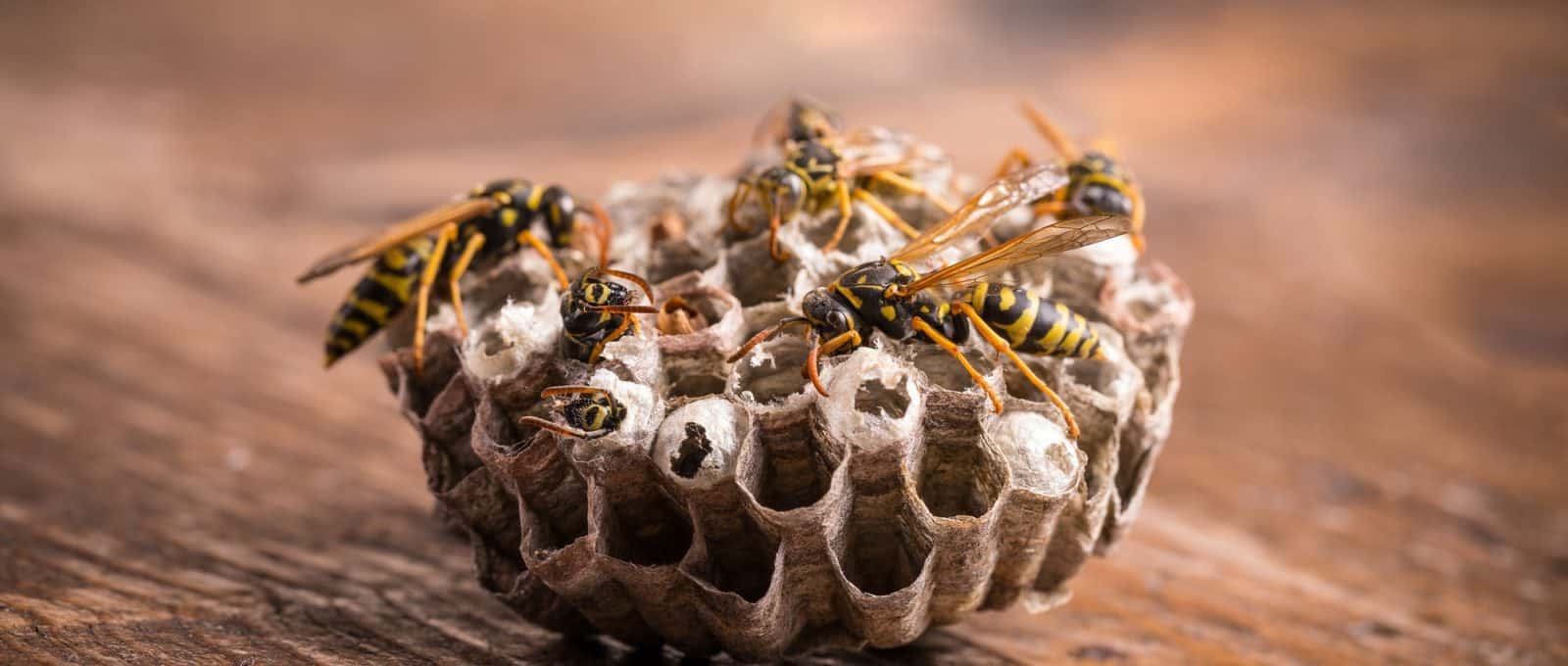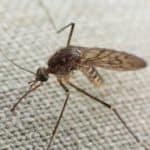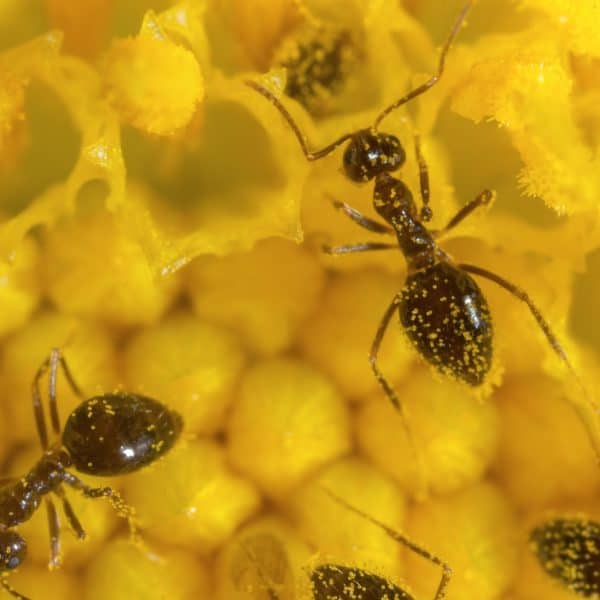How to Remove a Wasp Nest
It’s every homeowner’s nightmare: a wasp nest on – or, worse, inside! – your property. Wasps can build their nests anywhere, from your awning to your drain pipe to your attic walls, and if you aren’t a trained professional it can be hard to know what to do about them.
So how should you handle it if you discover a wasp nest in or around your home?
Many people would prefer to have an exterminator handle the job, and in some instances, this is the best and safest solution. However, it can come with a hefty price tag attached, and for people living in more remote or rural areas, there may not be any extermination services in close proximity.
In a situation like this, you’ll be glad to have the know-how to remove a wasp nest yourself – and take the necessary steps to ensure the wasps get gone and stay gone.
Isn’t This a Job for an Exterminator?
In most instances, it’s best to leave wasp nest removal to the pros. However, we recognize that not everyone has the resources to afford a good exterminator and that especially in spring or summertime it can be a matter of some urgency to get rid of wasps near your home, especially if you have kids who play outside.
The DIY method is naturally riskier, but with the proper information, you can minimize your chances of being stung and soon be wasp-free! But this isn’t an endeavor to jump into blindly. Before you begin, it’s vital that you do your research.
Wasp Removal: Separating Fact from Fiction
A quick Google search will show you that there’s no shortage of creative suggestions for how to get rid of wasps, and some of them are a lot more accurate than others. For instance, some webpages advise flooding a wasp nest with water from the garden house, burning the nest, or destroying it with a bat or club.
These are all risky approaches with a high likelihood of failure – and a high risk of injury to the person foolish enough to attempt them! If you’ve ever been stung by a single wasp, you know how badly it hurts. Now imagine an entire swarm of them, and how eager they’ll be to sting you after you’ve clobbered their nest with a bat.
The safe removal of a wasp nest begins with being informed. We’ll walk you through the whole process step by step.
Know What You’re Dealing With
Before you can eradicate the problem, you need to know what kind of wasps you’re dealing with. Not all of these bothersome pests are created equal, and in fact some flying insects that appear to be wasps aren’t wasps at all. If you aren’t careful, you can find yourself trying to exterminate a yellow-faced bee, or another benign insect that’s covered by the Environmental Protection Act.
To avoid getting yourself into legal hot water, know how to identify the pest you’re trying to get rid of. Paper wasp nests typically look like roundish cones attached by a single stalk to a horizontal surface, usually in a covered location. They can commonly be found under porches, in attics, in trees, in the corners of windows, and even inside the barbecue you haven’t lit since last summer!
Once you’ve verified that the nest you’re dealing with does belong to paper wasps, you need to understand how the wasp colony works.
It’s All About the Queen
The queen is the most important feature of the wasp colony, and the other wasps have been programmed by evolution to protect her. This means that if you attempt to destroy the nest sheltering their queen, the wasps will likely swarm you. Unlike other stinging insects, wasps won’t simply sting you once and then die. They can each sting multiple times!
At this point, if you’re rethinking the wisdom of handling a paper wasp nest on your own, we encourage you to contact a professional exterminator and let them handle the job for you. However, if your location or budget make that impossible, there are strategies for safe nest removal.
Protect Your Face and Body
Before you approach the wasp nest, you want to make sure as little of your skin as possible is exposed. Ideally, you should don protective clothing that covers your body, limbs, head, and face. Thick hoodies or sweatshirts, sturdy jeans, tightly laced boots, and durable rubber gloves are all recommended. You should use duct tape to close any gaps between your sleeves and gloves, as well as your pant legs and socks.
If you have access to a beekeeper’s hood or similar, that’ll afford the greatest possible protection to your face and head. If not, a helmet that fully covers the face will do, or at a very minimum a hood with eye protection like shop goggles. If you have an allergy to wasp stings, under no circumstances should you attempt removal yourself even with protective clothing on.
Time the Removal Carefully
Spring is preferable for wasp nest removal because wasps are less active at this time of year. Fall is a particularly high-risk time to attempt removal, so we don’t advise trying it yourself just then.
Wasps are more active in the daytime. Rather than approaching their nest during the busiest time of day when you are likeliest to aggravate them, wait until after dark to begin the removal process. This will ensure the wasps are dormant and less likely to swarm you.
Avoid using any bright flashlights or lanterns during removal, as this can alert the wasps of your approach and make them more likely to swarm. If need be, a dim flashlight can be used, or even your phone screen with the brightness adjusted to the lowest possible setting that still allows for the visibility you need.
You should only use as much light as is necessary to ensure your safety, but not so much that the wasps are disturbed.
Have an Escape Plan in Mind
This is a situation where it’s good to envision the worst-case scenario in advance so you can strategize around it. Here are some questions to ask yourself:
If the wasps do swarm, can you get away easily?
Will you be able to get back into the house without letting wasps in after you?
If a wasp manages to make it through the protective barrier of your clothing, do you know how you’ll get it out?
If you’re stung, do you have the first aid you need to treat the sting yourself? If not, are you able to access medical attention promptly?
All of these considerations should be made in advance. Equal care should be taken to ensure that your home’s doors and windows are securely sealed, that no children might wander out during the removal, and that all of your pets are in a safe and secure location.
A Step-by-Step Process for Safe Removal
Once you’ve completed all of the above, you’re ready to begin the removal process. You will need:
- A garbage bag big enough to completely cover the nest and still be securely tied
- An outside garbage can with a tight-fitting lid, preferably situated some distance away from the house
- Insecticide formulated to kill wasps
With your protective clothing and gloves on, slowly approach the wasp nest with your garbage bag. Make sure the bag is open and ready before spraying the nest with insecticide.
Then, as quickly as possible, place the garbage bag over the nest and detach it from its anchor point. Seal the bag immediately, and deposit it in the garbage can away from the house. Close the lid.
This should all be done as carefully and precisely as possible while still acting quickly.
Please note that if the wasp nest is in a hard-to-reach location, or if you need to scale a ladder to get to it, you should enlist a professional. The trickier it is to reach the nest, the higher your likelihood of injury. Ending up with an unanticipated medical bill will defeat the point of not hiring an exterminator!
Now That They’re Gone, What Next?
The key to avoiding wasps in the first place is prevention. This can be accomplished by:
- Placing wasp traps around your home and yard
- Installing fly screens over any windows to prevent them from entering the house
- Performing regular inspections of any entry points into your house to ensure that they’re sealed
Conclusion
Wasps are a nuisance, and they can seem quite scary, but getting rid of them isn’t nearly as complicated as some would have you believe. With a few precautions, a well-formed plan, and the proper equipment, you can safely rid your home of these stinging insects and ensure the safety and comfort of you and your family.






